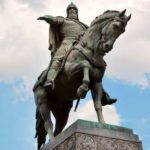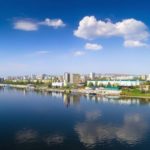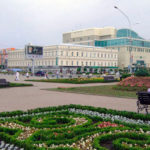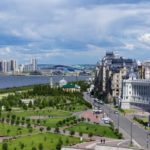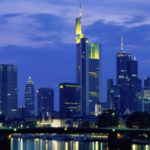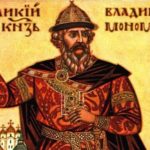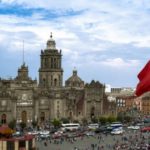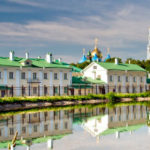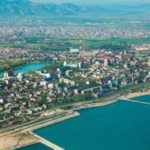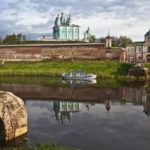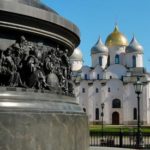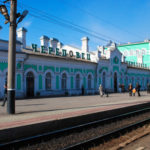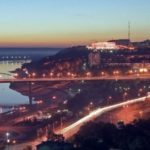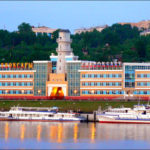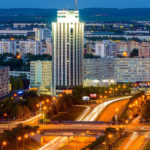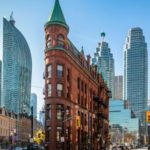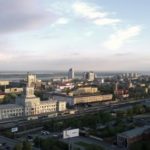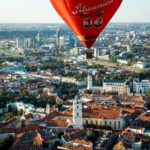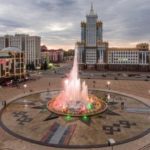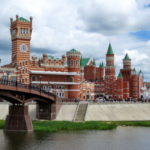Facts about Rostov-on-Don
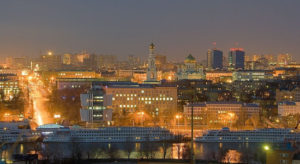 Rostov-on-Don is sometimes confused with Rostov the Great because of the similarity of the names of these cities, and completely in vain. Rostov the Great is a small, albeit very interesting, city not far from Moscow, and Rostov-on-Don can rightfully be called a metropolis, and in general, perhaps the main city of the whole south of Russia. It is here that a lot of people come to, both in search of work, and with the goal of finding new impressions – in this city there is something to see a curious visitor.
Rostov-on-Don is sometimes confused with Rostov the Great because of the similarity of the names of these cities, and completely in vain. Rostov the Great is a small, albeit very interesting, city not far from Moscow, and Rostov-on-Don can rightfully be called a metropolis, and in general, perhaps the main city of the whole south of Russia. It is here that a lot of people come to, both in search of work, and with the goal of finding new impressions – in this city there is something to see a curious visitor.
Rostov-on-Don is the largest of the southern cities of Russia, which is home to 1.2 million people. This is the tenth city of the RF according to the number of inhabitants and the 30th largest metropolis in Europe.
Part of Rostov-on-Don, located on the left bank of the Don, locals call only Levberdon (sometimes Leberdon). There are many recreation centers, hotels, restaurants, cafes and nightclubs.
Rostov-on-Don is located immediately in two parts of the world – the southern bank of the Don is considered Asia, and northern Europe.
Rostov-na-Donu since the XIX century is called the “Gateway of the North Caucasus”, since for a long time it was the only railway branch in the country to this region. The expression “Rostov-Pope” is also common, in contrast to “Odessa-Mama”.
Rostov has always played a crucial role in the life of the country due to its unique geographical location – the city has access to 5 seas (Black, White, Baltic, Azov and Caspian).
The maximum temperature for the whole time of observations was recorded in Rostov-on-Don in August 2010 – 40.1 degrees Celsius.
On the territory of Rostov there are ruins of ancient buildings erected at different times, up to 3 thousand years before our era.
The modern city appeared on the site of the fortress, laid to protect the border areas of Russia from the south by the decree of Empress Elizabeth Petrovna. The fortress never did a single shot.
In honor of the giant Rostov plant “Rostselmash” in 1935, the country’s largest drama theater with a hall in the form of a tractor was opened.
During the war, Rostov-on-Don was twice occupied by German troops. The city entered the top ten Russian cities, most affected by military operations – about 12,000 buildings were destroyed.
In Rostov City Day began to celebrate in 1864. Then this holiday was on September 20, and now – on the third Sunday of the same month.
Twice a year in Rostov-on-Don, a solemn Tree-planting Day is taking place. For the first time a mass planting of trees took place in 1910, and a century later this tradition was successfully revived.
Millionth by the count of Rostov was born in 1987.
In Rostov-on-Don on an area of 360 hectares stretches the Northern Cemetery, which is considered to be one of the largest in Europe.
On Voroshilovsky Prospekt there is an Alley of Stars, which since 2008, in spring and autumn, is laid on a star in honor of prominent citizens.
On the Theater Square in Rostov there is a stele in memory of the victims of the war, which depicts the Greek goddess Nika in a raincoat.
It was in Rostov-on-Don in 1929 that the first automatic telephone exchange in Russia appeared, capable of serving up to 6,000 subscribers.
One of the city’s attractions is a public toilet in the basement of an old mansion in Gazetny Lane, located in the former premises of the bohemian café “The Cellar of Poets”. When the city was in ruins in 1945, it was his only public restroom. She also became the first cooperative toilet of Rostov in the days of Perestroika. The toilet was even offered to be immortalized on a denomination of 200 rubles, which the Central Bank intends to release.
In Rostov-on-Don during the Holocaust, the Germans shot more than 27 thousand people – this is the most terrible such massacre in Russia.

